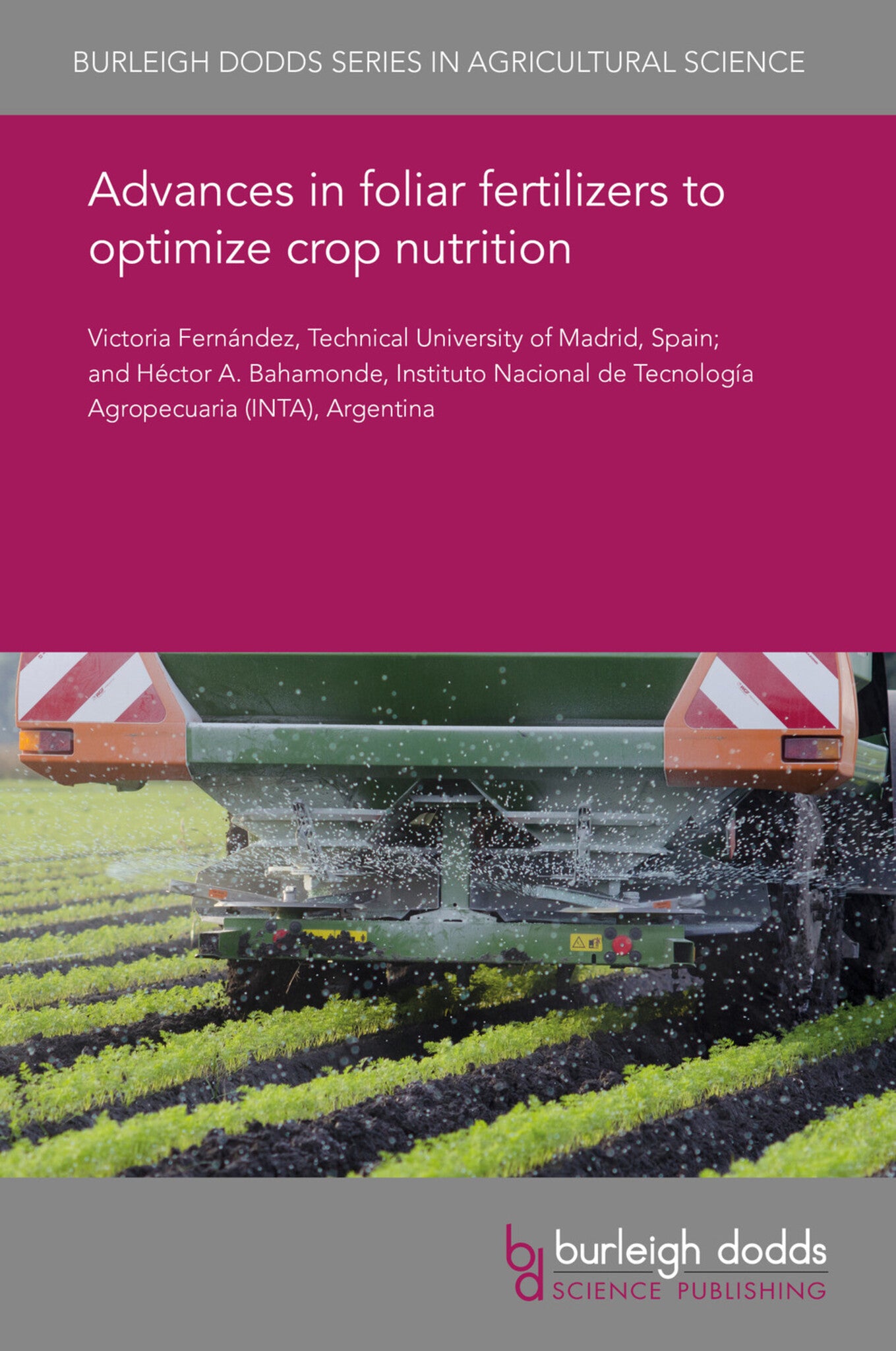We're sorry. An error has occurred
Please cancel or retry.
Advances in foliar fertilizers to optimize crop nutrition
Regular price
£25.00
Sale price
£25.00
Regular price
£25.00
Unit price
/
per
Sale
Sold out
Re-stocking soon
Foliar fertilizer sprays are increasingly used in agriculture for improving crop yield and quality, and also for improving plant performance under potential abiotic and/or biotic stress threats. Th...
Read More

Some error occured while loading the Quick View. Please close the Quick View and try reloading the page.
Couldn't load pickup availability
- Format:
-
17 February 2020

Foliar fertilizer sprays are increasingly used in agriculture for improving crop yield and quality, and also for improving plant performance under potential abiotic and/or biotic stress threats. This chapter focuses on new findings related to the nature of plant surfaces as a barrier for the absorption of agrochemicals. The chapter describes current knowledge on mechanisms of absorption by plant organs as affected by the structure and chemical composition of the surfaces. The chapter discusses key aspects related to the properties of foliar spray formulations for improving and standardizing the performance of the treatments under variable environmental conditions, with examples of recent foliar fertilization studies in relation to plant ontogeny. The chapter looks ahead to future trends for the application and development of foliar sprays as tool for sustainable agricultural production, as well as providing suggestions on where to look for further information.

Price: £25.00
Publisher: Burleigh Dodds Science Publishing
Imprint: Burleigh Dodds Science Publishing
Series: Burleigh Dodds Series in Agricultural Science
Publication Date:
17 February 2020
ISBN: 9781786766687
Format: eBook
BISACs:
TECHNOLOGY & ENGINEERING / Agriculture / Sustainable Agriculture, Agronomy and crop production, TECHNOLOGY & ENGINEERING / Agriculture / Agronomy / Crop Science, Sustainable agriculture

1 Introduction 2 Importance of absorption for spray effectiveness: key factors involved 3 Application of foliar sprays for sustainable production: applied aspects 4 Conclusion and future trends 5 Where to look for further information 6 References



